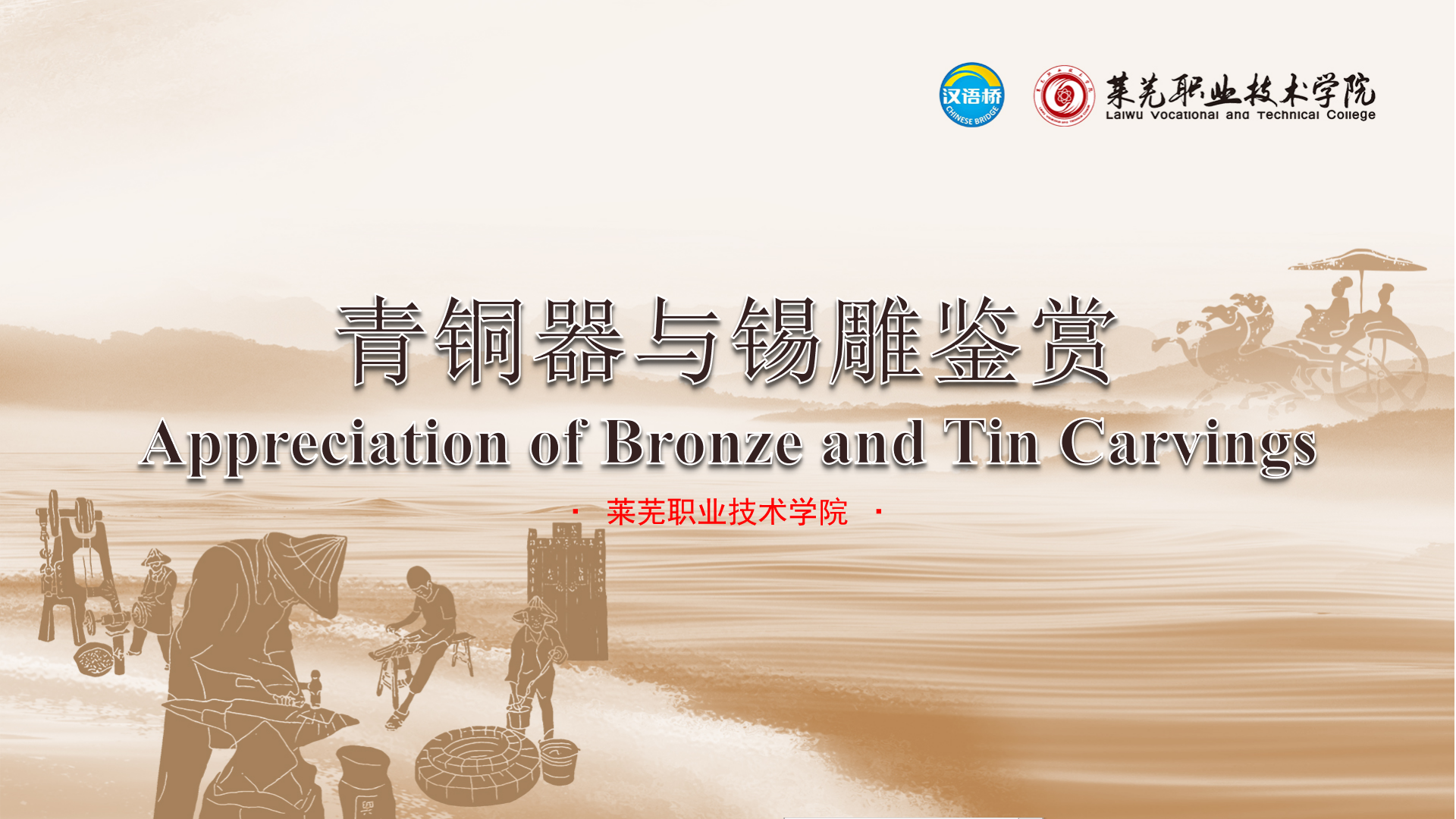Appreciation of Bronze and Tin Carvings
青铜器与锡雕鉴赏

Course Syllabus 课程章节
6Bronze is also the representative of ancient Chinese material culture. It appeared at the end of the Neolithic period and reached a peak in the Shang and Zhou dynasties. The patterns on the bronze ware are diverse, representing the highest level of early artistic attainments. The inscriptions on bronze wares are one of the main carriers of early Chinese writing. Appreciating it will help to understand the development of Chinese writing and improve the level of appreciation of calligraphy. The casting technology of bronze ware represents the highest scientific and technological level in ancient China, and the knowledge summed up by people in the mining, smelting and casting of bronze has been directly pushed to the arrival of the Iron Age in China. Among the numerous bronze wares in various periods, there are also some fine and heavy wares. The introduction of their patterns and appreciation of their shapes will help us to strengthen our understanding of Chinese bronzes and traditional Chinese culture. Tin carving is a traditional tin art widely popular among Chinese folk. Tin has the advantages of non-toxic, stainless, moisture-proof, acid and alkali resistance, soft texture, low melting point and easy to process. Traditional tin work is mainly used to manufacture daily necessities. The tin making process is a self-contained system, mainly including melting, casting, modeling, cutting, scraping, welding, polishing, decoration, carving and other processes and techniques. During production, the shape of the utensils is constructed according to practical functions. The finished tin ware is rich in shape and exquisite in decoration, which fully reflects the ingenuity of the designer. In 2008, tin carving was approved by the State Council of the People's Republic of China to be included in the second batch of national intangible cultural heritage list。
青铜器是中国古代物质文化的代表。它出现在新石器末期,到商周时期达到了一个顶峰。青铜器上花纹多样,代表了早期艺术造诣的最高水平。青铜器的铭文是中国早期文字的主要载体之一,通过对它的赏析有助于了解中国文字的发展和提高鉴赏书法艺术的水平。青铜器的铸造技术代表了中国古代最高科技水平,人们在青铜的采、冶、铸所总结的知识直接推到了中国铁器时代的到来。在各个时期众多的青铜器中,也不乏一些精品和重器,通过对它们纹饰的介绍,对其造型的赏析,有助于我们加强对中国青铜器的了解,对中国传统文化的了解。
锡雕是广泛流行于中国民间的一种传统锡作艺术。锡有无毒、不锈、防潮、耐酸碱等优点,质地软,熔点低,易于加工。传统锡作以制造日常生活用品为主。锡作工艺自成体系,主要包括熔化、铸片、造型、剪料、刮光、焊接、擦亮、装饰、雕刻等工序和技巧,生产时按实用功能构造器物形制。成品锡器造型丰富,装饰精巧,充分体现出设计制作者的匠心。 2008年,锡雕经中华人民共和国国务院批准列入第二批国家级非物质文化遗产名录。





